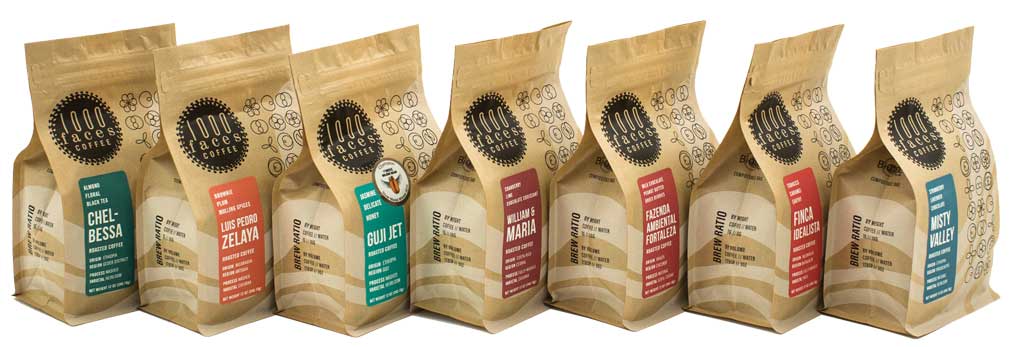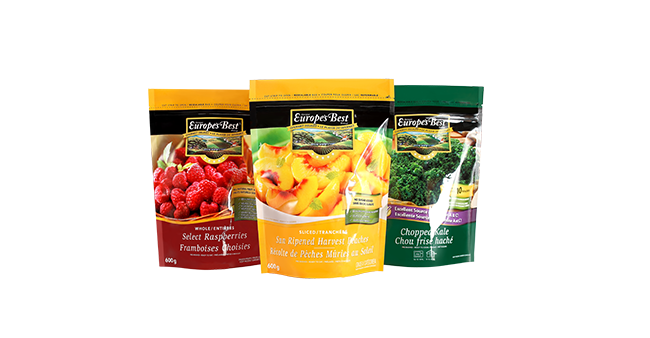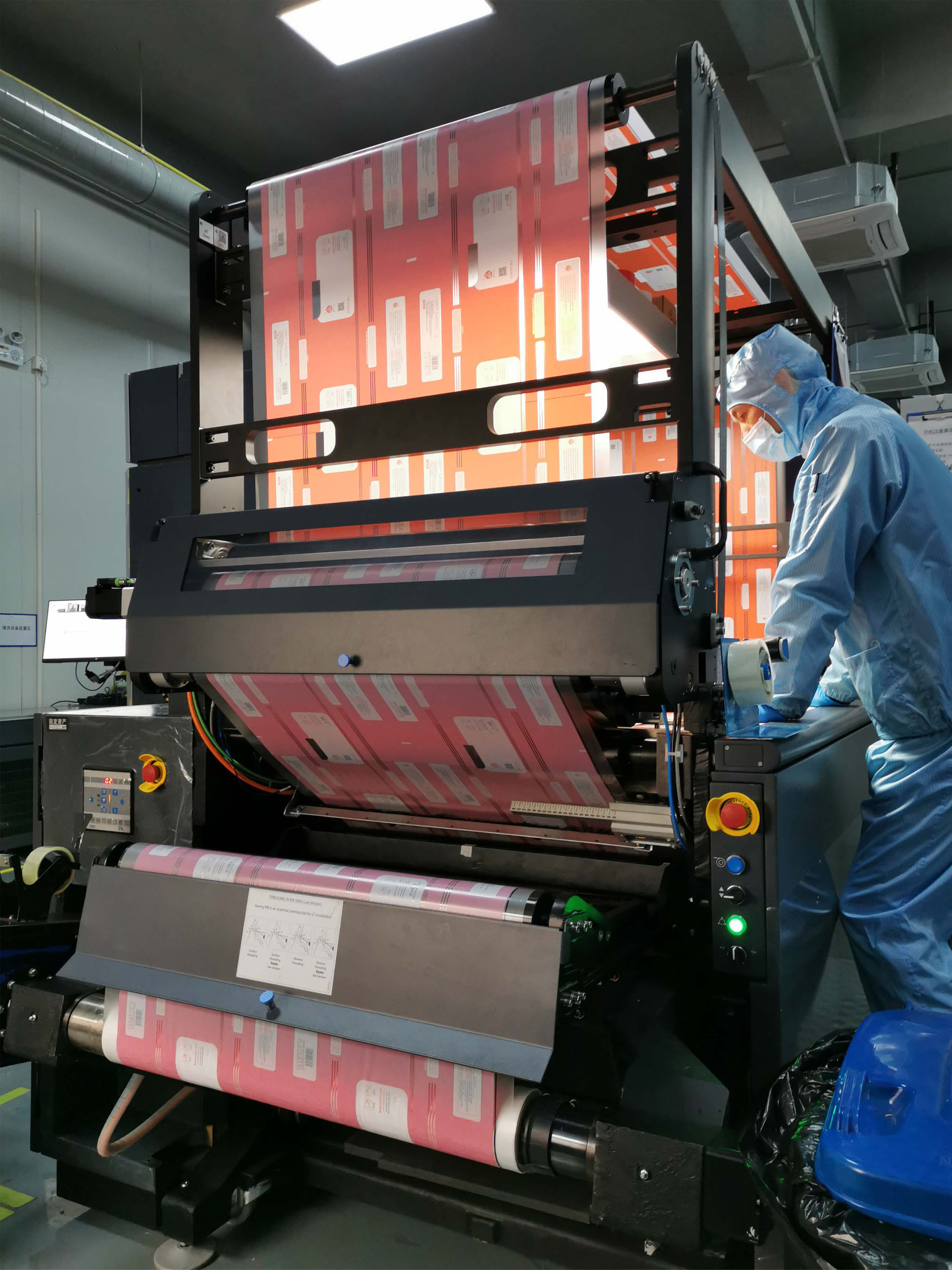Trends In The Flexible Packaging Industry
- Categories:Industry News
- Author:Jake
- Origin:
- Time of issue:2022-06-22 15:12
- Views:
(Summary description)rom COVID-19 to sustainability, two ExxonMobil experts, Francois Chambon, Global Strategic Marketing Manager for Polyethylene, and Etienne Renou, senior technical specialist, looked into the future of the flexible packaging market.
Trends In The Flexible Packaging Industry
(Summary description)rom COVID-19 to sustainability, two ExxonMobil experts, Francois Chambon, Global Strategic Marketing Manager for Polyethylene, and Etienne Renou, senior technical specialist, looked into the future of the flexible packaging market.
- Categories:Industry News
- Author:Jake
- Origin:
- Time of issue:2022-06-22 15:12
- Views:
From COVID-19 to sustainability, two ExxonMobil experts, Francois Chambon, Global Strategic Marketing Manager for Polyethylene, and Etienne Renou, senior technical specialist, looked into the future of the flexible packaging market.

The growth of the packaging industry is now being driven by two trends: global population growth and an expanding middle class. The global population is expected to reach 9.2 billion by 2040, compared with 7.5 billion today. At the same time, the global middle class is expected to grow by 66% over the next decade, from 3 billion to more than 5 billion, as people live longer and pursue healthier and better lives.
Rising living standards will lead to greater access to cars, appliances and electronics. This is especially true in China, where PER capita GDP is expected to triple to more than $40,000 by 2040, which will be similar to the purchasing power of the OECD in Europe in 2030.
Chemical demand growth outlook
Over the next decade alone, these mega-trends will lead to an estimated increase in global chemicals demand of nearly 45 per cent, or about 4 per cent per year. This is higher than energy and GDP growth forecasts for the same period. The expected impacts on the plastics industry include:
Consumer demand for plastics, fertilizers and other chemicals will rise with incomes
Olefins and aromatics are basic components of plastics and other consumer products
Manufacturers see plastic as a lightweight, durable material that can improve the performance of products used in everything from packaging to car parts to medical devices.
Almost all of this growth is expected to occur in developing countries, with two-thirds of it in the Asia-Pacific region. India and China are expected to have more than 1bn middle class populations each by 2040, driving demand for packaging and polyethylene (PE) in particular.
Packaging trends
While the growth of the global population and middle class is driving demand for chemicals and plastics, other trends are also shaping the packaging landscape.

Pressure to resist single-use plastics: It is expected that packaging value chain participants and the public will push to reduce single-use plastic waste. Some retailers, particularly in Europe, experienced early plastic trade-offs before the coronavirus outbreak. Once the crisis passes, people are likely to place more emphasis on packaging safety as consumer sentiment shifts to health and protection first. This may change the way consumers view packaging, placing more emphasis on hygiene rather than sustainability.
Ecommerce and Convenience: The rise of ecommerce and the growing need for convenience is shaping new B2B and B2C customer expectations. Ecommerce and home delivery businesses have seen a big boost during the pandemic, but packaging needs to be better shock and puncture resistant because they are physically handled by more people than traditional value chains. For example, fresh meat packaging leakage is the most common complaint encountered in fresh meat distribution due to seal failure and puncture caused by sharp objects, careless handling or improper packaging material selection. Packaging for liquid products has also changed from rigid to flexible packaging, as e-commerce purchases require enhanced integrity.
Smart Value Chains: Industry 4.0 and Internet of Things (IoT) are transforming industrial production and creating new opportunities in PE value chains. Industry 4.0 helps ensure traceability from packaging production to final product placement on retail shelves and is expected to play an increasingly important role in ensuring traceable packaging ingredients, particularly when recycled ingredients are included.
Key areas of sustainable development
The need to create more sustainable solutions in the packaging industry value chain will continue to grow, focusing on three aspects of using PE:
Recovery design: Can provide a high quality single material recovery flow solution, which can then be incorporated into a variety of next step PE structures.
Upgrade recovery Flow: A solution to improve the performance of PE films that have been contaminated by foreign immiscible polymers such as EVOH or polyamide PA using compatibilizers.
Increased recovery: Solutions that include boosting high performance PE polymers to increase recovery to maintain the mechanical properties of the end product.
Value chain collaboration is imperative in terms of improving recycling rates while maintaining performance, as packaging must be functionally effective, all in order to achieve the European Commission's target of using 10 million tonnes of recycled plastic per year by 2025.
Recycling design
Many packaging structures have traditionally used composite structures, which typically include PE film as a sealing layer, and directional films such as polyester or PA film as a substrate. These multi-material structures are difficult to recover during mechanical recovery.
In recent years, solutions have been created to replace these substrates with more easily recyclable PE films, and many new solutions are being developed. Of particular interest is oriented PE, either unidirectional (MDOPE) or bi-directional (BOPE). These PE/PE laminates can improve recyclability and may contribute to the circular economy.
One success story is the all-PE laminated stand-up pouch (SUP) solution to replace traditional multi-material structures. Where processes and facilities exist to collect and recycle plastic films, these all-PE SUPs can be easily recycled. This is step 1.
Step 2 is to recycle the contents of the all-PE stand-up pouch (green SUP). It is made from MDO film using 100% virgin PE, laminated to a sealing film that contains recycled material from the all-PE SUP from step 1. The recycled material is combined with virgin Exceed XP, Exceed and Enable high performance PE polymers and Exact plastic body products to maintain the mechanical properties of the final SUP. The entire structure combines 30% recycled content PE film and 70% virgin PE.
It offers excellent packaging integrity, puncture resistance and optical properties, making it ideal for non-food applications such as detergents and dishwasher labels. the creation of SUP leveraged collaborations with Hosokawa Alpine (film extrusion and MDO equipment), Erema (recycling machinery) and Henkel, which developed optimized adhesives for mechanical recycling, improved processability during re-extrusion and reduces the odor and discoloration of materials that affect recyclables.
MDO Stretch Resistance
The MDO process significantly improves machine orientation stretch resistance, making PE films stronger when printed and laminated, and is key to SUP's success. The film structure below shows the 5-layer PE film developed for MDO and lamination. Since many of today's packaging machines are designed to handle high heat resistant composites, it is necessary to add large amounts of high density PE (HDPE) to the formulation to avoid or minimize heat distortion during the sealing process.
To ensure excellent optical performance after MDO, medium density Enable 4002 and Enable 4009 (0.940 density) high performance polyethylene are placed in each surface layer. They also give excellent film optical properties at a lower stretch ratio compared to other solutions, such as those that use HDPE in the surface layer. Very good optical properties can still be achieved with only 4.6 stretches, whereas HDPE resins typically require about 6 stretches. Processors can stretch the film less, thus minimizing the risk of fragmentation that can be detrimental to productivity.
Exceed XP high performance polyethylene is added to the core layer to enhance mechanical properties and bagging performance. If higher heat resistance is required, some HDPE can also be added to the core layer. The MDO film, combined with the PE sealing film, has bag-dropping properties similar to that of the OPA/PE composite. As for further developments, ExxonMobil is currently working on solutions that incorporate gas barrier properties into MDOPE/PE composites while maintaining performance and recovery opportunities.
Polyamide removal
Multilayer co-extruded structures containing PA may be an important problem for recycling. These structures are commonly used in thermoforming applications and contain 30-50% PA. PA is widely used, with adhesion, puncture resistance, wear resistance, easy thermal forming and barrier properties.
Removing PA from these multilayer structures is a key goal in improving recyclability. Exceed XP 6026 and 6056 High performance polyethylene can be used to improve puncture resistance while reducing PA layer thickness. PA was reduced by 30% and puncture resistance was enhanced. Development work is under way to further reduce or remove PA in these multilayer films, as is the case with PE thermoforming films or at least polyolefin thermoforming films, which can be easily recycled.
Upgrade recycle flow
The difficult-to-recycle hybrid converged logistics will continue to be a challenge for the industry for the foreseeable future. Compatibilizers that combine polyolefin with incompatible polymers while minimizing performance loss are being developed.

The effect of compatibilizer on PE + PA mixture is shown in two images. Without the compatibilizer, PA will not disperse well into the PE substrate, thus reducing the performance of PE. The addition of an effective compatibilizer helps disperse PA into smaller inclusions and bind it to PE.
The effect of compatibilizers on performance can be significant. The chart highlights the performance of capacitors based on MAH grafted Witarme high performance polymers in industrial post-cycle flows containing PE, POLYPROPYLENE (PP), PA and EVOH. Structures represented by grey shaded areas are made from 100% recycled ingredients and perform poorly. The addition of compatibilizers can significantly improve mechanical properties such as dart resistance, tear resistance, and puncture resistance, as shown in the blue outline.
Increase recovery content
A problem associated with increasing recycled ingredients in formulations is that it adversely affects the performance of the final product. High-performance polymers such as Exceed XP can be added to improve performance.
The gray shaded areas in the diagram represent the basic membrane structure, made of 70% LLDPE and 30% LDPE. As shown by the dotted purple line, the introduction of 75% Exceed XP 8656 high performance polyethylene in the top layer allows for the use of up to 100% recycled resin in the core, while maintaining the suitable film properties similar to the reference film made from the original polymer.
Another way to consider the impact of high-performance PE polymers on the entire film is to use 38% Exceed XP to allow the introduction of up to 50% recycled materials. Using a similar concept, a collaboration between The Barbier Group, France's leading PE film processor and recycler, and ExxonMobil has led to The manufacture of finished shrink films containing 50% post-consumer recycled ingredients and Enable 4002 high-performance polymers as performance booster. Packaging with minimal risk of breakage does not degrade mechanical properties, while optical properties such as gloss and transparency enable brand owners to market products effectively.
conclusion
Developing sustainable solutions over time contributes to a circular economy. Collaborative efforts across the value chain to harness the power of these three technology focus areas will play a key role in the development of innovative solutions that deliver sustainable benefits and meet changing brand owner commitments, consumer expectations and regulatory changes.

